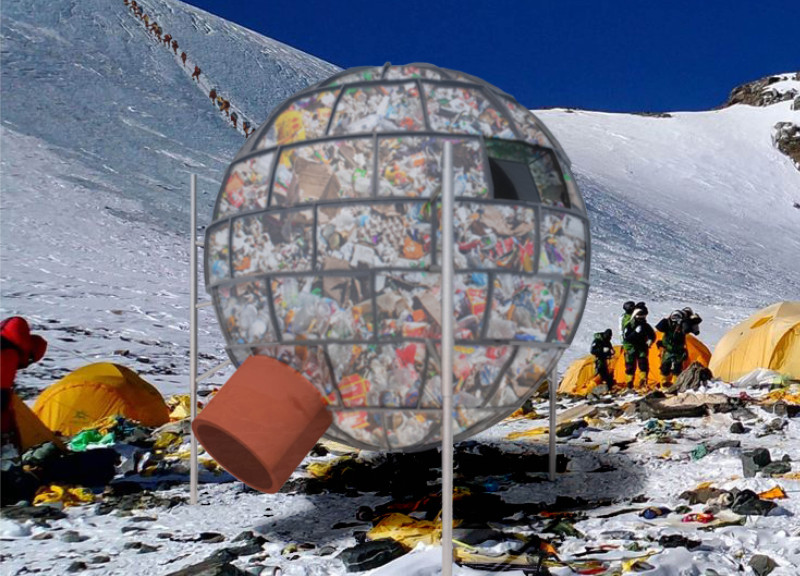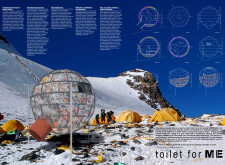5 key facts about this project
The spherical public toilet cabin offers a new approach to public sanitation facilities. It is designed to serve various locations, enhancing the accessibility of restroom services while focusing on sustainable principles. The main idea is to change the way people feel about using public toilets, making the experience more pleasant and functional through its unique round shape.
Design and Adaptability
The structure is designed to adapt well to different environments. By elevating the cabin on binding poles, it can adjust to various terrains and surfaces. This raised design protects users from harsh weather, providing a dry entrance while placing them in a more open space compared to standard restroom booths. Its shape is easy to recognize, making it convenient for users to find.
Self-Sufficient Technology
A key feature of the cabin is its focus on self-sufficiency. It uses a nano-membrane toilet technology, which does not require electricity or running water. This system effectively separates dry waste from liquids, allowing the dry material to be turned into fuel. This fuel can provide energy for several functions, including charging devices or converting snow into water. The liquid waste is treated and recycled, promoting hygiene and resourcefulness.
Interior Functionality
The cabin's interior is designed for ease of use. As users enter, they find a wide bench with a toilet seat in the center, allowing for comfort during use. The walls include railings and netted shelves to make movement easy and offer storage for personal belongings. This careful layout enhances usability, ensuring that it serves everyone well, regardless of their situation.
Construction and Materials
Made from lightweight plastic tray-like elements, the cabin is pre-made for easy transport and quick assembly. The choice of materials supports the adaptable goal of the design, allowing for installation in various locations without the need for special tools. This approach to construction ensures that restrooms can be set up efficiently and effectively wherever needed.
The design includes thoughtful details, such as netted shelving and a unique waste management system, all aimed at improving the user experience and making public sanitation facilities more welcoming and functional.



















































